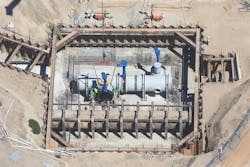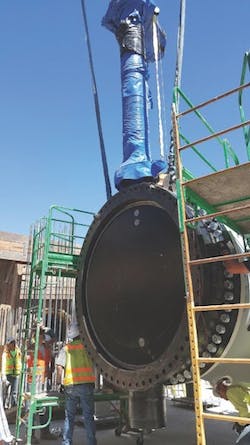Flow Equalization Saves
John V. Ballun, P.E., is president and CEO of Val-Matic Valve & Mfg. Corp. Ballun can be reached at [email protected].
undefinedA $2-billion expansion to Regional San’s wastewater treatment plant called the EchoWater Project plans to improve the quality of water discharged to the Sacramento River and expand opportunities for recycled water use. Regional San serves 1.4 million residents and is required to comply with new water quality requirements imposed by the state of California in 2010. Funding for the project was obtained by the state’s Clean Water State Revolving Fund (CWSRF) and will be repaid by users and client partners over several decades. Regional San expects that with the completion of the EchoWater Project in 2023, nearly all of the plant’s wastewater will meet recycled water standards and be available for irrigation and power plant projects in the region with the intent to sustain regional water supplies and enhance the environment.
The flow equalization system is one construction project associated with the expansion. By adding storage basins and an automated flow regulation system, the peak flows into the plant can be level-loaded. The incorporation of a flow equalization process allowed plant designers to optimize the treatment equipment for average flows instead of peak flows, thereby reducing the investment required for the project. Since the project used CWSRF funds, all construction was subject to the 2014 American Iron and Steel (AIS) requirements, which dictates that all iron and steel products be produced in the U.S. Therefore, all the iron and steel valves supplied for the EchoWater Project were made in the U.S. with U.S. castings, producing more jobs.
Valve Control
An essential control element of the flow equalization process was the installation of large butterfly valves to control the flow into storage basins and into the plant. The high flows and large pipe diameters required the use of 84- and 102-in. butterfly valves designed to American Water Works Assn. (AWWA) Standard C516. Butterfly valves are relatively compact and economical. These 10-ton valves are installed in the piping system with flanged connections. The valves are operated by rotating the valve shaft and disc 90 degrees; therefore they are easy to automate with electric motor actuators.
The ductile iron disc or closure member rotates 90 degrees in concert with the stainless steel shaft. The two are rigidly connected by tangential taper pins sealed with O-rings to provide zero backlash in the connection. When closed, the valve resilient seat makes contact with the stainless steel body seat and provides zero leakage at full rated pressure. The seat retention system includes overlapping, investment cast and stainless steel segments that retain the seat but allow adjustment or replacement over the life of the valve. These valves undergo a 500-cycle AWWA Proof of Design Cycle Test at full rated pressure to verify the integrity of the valve.
The electric motor actuators were raised up about 10 ft above the pipe to be out of the reach of the water and ground using an extended bonnet assembly. This assembly consists of an inner shaft that must be capable of transmitting the full torque of the valve with minimal torsional deflection so that the valve disc can be precisely positioned and held in the full closed or open position. The outer pipe consists of a larger pipe that must similarly transmit the valve torque and position, but also support the mounting of the actuator above the valve. Together, the two pipes represent a reliable valve torque and positioning system for the valve assembly.
The valve actuators are motorized so that they can be operated from a computerized flow control system. The system will signal the valve to intermediate positions to control the flow rate into the storage basins or the tertiary treatment plant.
The flow equalization project is only one of the early phases of the EchoWater Project. As more phases are completed, the benefits of the project will develop and last for generations.

